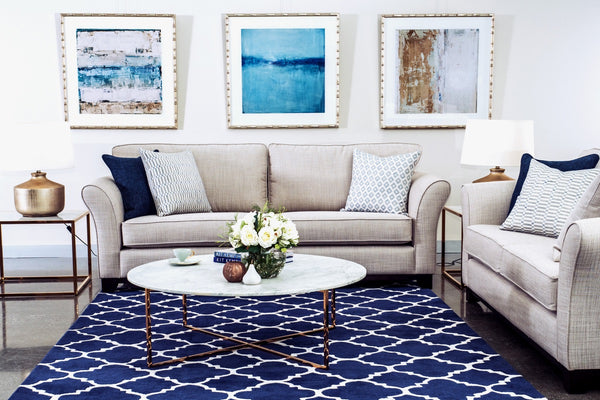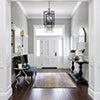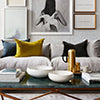Mixing styles from a different era can create a dynamic interior full of texture and visual interest, yet getting it right can feel daunting.
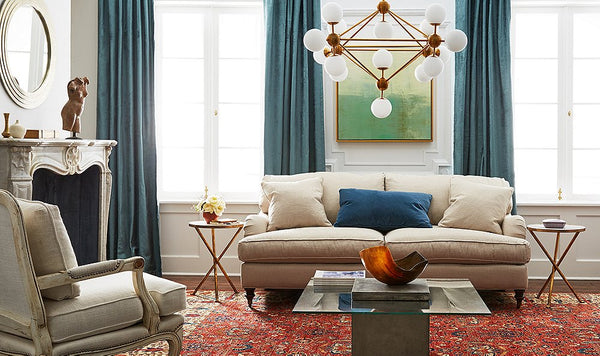
Source: One Kings Lane
If you’re downsizing from a family home to something smaller like a modern apartment, a unit or townhouse chances are you’ve got a lot of furniture. Trying to fit all that furniture into a smaller footprint can be challenging and it’s tempting to donate or sell everything to start a fresh.
However, there are benefits to keeping some of your pieces and mixing them with modern furniture items that are better suited to the size of your interior and your new lifestyle. Not only will it help your budget, combining old and new pieces will create a multi-layered interior that’s reflective of your personal style.
Taking the time to curate your interior will help you avoid total chaos and instead, create a space that achieves a cohesive look and feel.
We’ve got some tips that will assist you in combining different styles in the one space without feeling too overwhelmed!
Decide on your dominating style
Before you start shopping for furniture, decide on the style you’d like to be dominate in the space. By allowing one style to dominate, you create a sense of balance instead of the styles competing for attention.
Downsizing may present you with the opportunity to reinvent your style. Instead of keeping with the traditional look of the family home, you may opt for a primarily modern interior. This will then become your base and your antique pieces will be the accents.
For those who still love their traditional style, contemporary accents can then breathe new life and interest into the interior.
Whatever style you choose to lead the space, make sure you include enough of the second style to strengthen the look. One vintage armchair in a modern space may not be enough to make an impact. Likewise, a modern coffee table in an entirely traditional interior will look out of place and confusing the eye.
Pick up on the details
Urban Rhythm's Chloe Sofa
One of the easiest ways to create cohesion without being matchy-matchy is to pick up on the subtle details of your furniture. This could be simply the shape or the lines of your traditional pieces or the materials and fabrics. For example, the timeless curved lines of our Chloe Sofa could work well with the turned timber legs of your antique side table.
You can also consider reupholstering or re-staining some of your older furniture pieces to give them a new lease on life and create a cohesive look. A classic armchair with its high back and comfortable seat upholstered in a contemporary fabric will look perfect next to a modern sofa.
Don’t be afraid to contrast
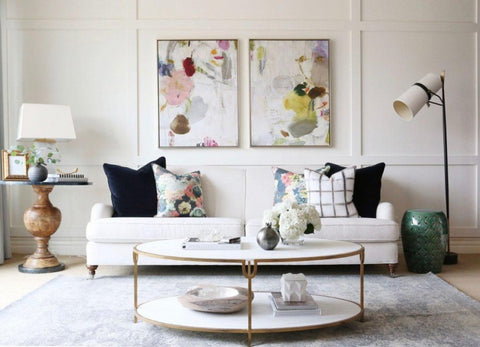
Source: McGee and Co
Contrast can add excitement and unexpected interest in the space rather than make everything blend. Colour and materials are the easiest ways to add contrast in the space and even a subtle juxtaposition can make a big difference.
Pair your classic sofa with a modern coffee table like our Elle round marble nest tables for a touch of glamour. An oriental rug can add a feeling of tradition and richness underneath a contemporary dining table. Adding colour, pattern and texture through soft furnishings like cushions and smaller accent pieces such as an occasional chair can also help lift the space and inject a bit of personality.
Consider scale
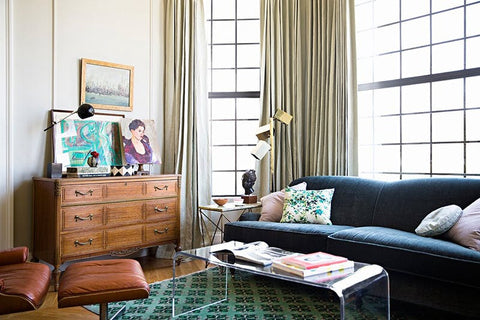
Source: Domino
When mixing furniture of different eras, keep the scale of the pieces in the same realm. A small, dainty antique chair can look swamped and out of place next to a large contemporary modular sofa.
Combining pieces that have a similar height and scale will make the interior work and give you flexibility. For example, you could consider placing two antique dining chairs of a similar scale at the ends of your contemporary dining setting.
Also consider the scale in relation to the dimensions of your interior. The large credenza you previously had positioned in the hallway of your family home may look too dominating in the entrance of your new apartment. However, the scale may work better when placed in a living or dining room.
Focus on the mood
Decide on the mood you desire for each space of your home. Are you wanting your living room to be casual and open? If so, avoid layering formal and heavy pieces of furniture into the space. Instead, play with simple lines and materials that are soft, light and classic while still mixing different eras.
Likewise, if you’re aiming for a formal and elegant room combine pieces that are sophisticated and rich in aesthetics. Darker timbers, brushed metals and luxurious fabrics like velvet will help emphasise the formal mood you desire.
Layer with art and lighting
Modern lighting and art can help you incorporate more traditionally styled pieces into a modern interior. A contemporary light sitting on an antique desk for example, can make a dynamic combination. A vintage dresser with a modern painting hung above will help the two styles come together. A traditional lamp positioned on a side table next to a modern, casual sofa like our Marcus can add a layer of visual interest to the space.
If you have traditional art, mirrors and lamps you’d like to add to a modern room, consider doing so more sparingly. You can also try reframing older art pieces to create a more contemporary look by bringing the decades closer together.
Distribute your furniture equally
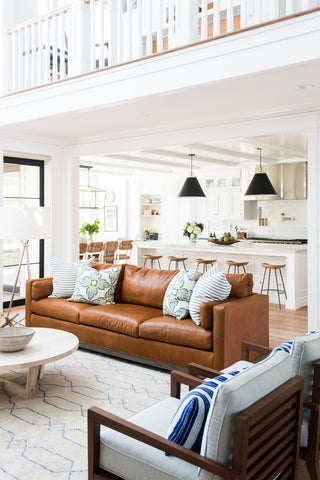
Source: Studio McGee
An interior with mid-century furniture on one side of the room and contemporary pieces on the other will only emphasise the difference in styles rather than bring them together. If you are placing furniture of multiple eras in the space, consider equally distributing the pieces throughout.
This way, the eye will view it as one cohesive aesthetic instead of seeing an overwhelming difference in styles.
Rather than curating your dining space with your traditional pieces and filling your living area with contemporary furniture in open-plan interior, mix them up. For example, use a traditional table with contemporary dining chairs and a pick up on the same style with a vintage occasional chair or lamps in the living space. It’s all about creating a common thread and continuing the dialogue from one space to another.
You might also like
Give your entrance the wow factor with these tips
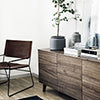 Keep your home organised with our decluttering tips
Keep your home organised with our decluttering tips
How to get creative with cushions without going over the top

